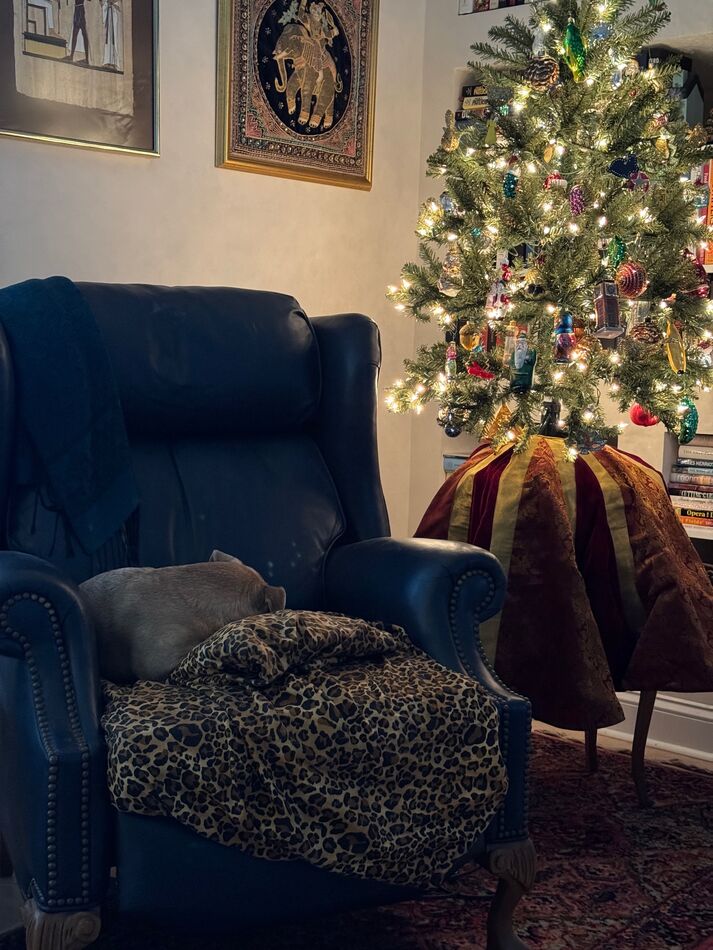Exposure Triangle Spreadsheet Updated
Dec 26, 2023 10:10:51 #
The original spreadsheet let you calculate the Light Value (LV) from the shutter speed, aperture and ISO. It showed the relationship between those three independent variables and LV.
For example, Sunny 16: 1/ISO at F/16 for full daylight will render a neutral gray card as middle gray (LV 14.67) in direct sunlight. If you don't have a gray card you can now specify the LV as 14.67 and calculate any of the other variables.
The updated spreadsheet (next post) lets you pick the dependent variable while changing any of the other three. There now four tabs named for the dependent variable.
1. "Light Value" calculates LV from ISO, Shutter Speed and Aperture (the original spreadsheet).
2. "ISO" calculates ISO from Shutter Speed, Aperture and LV.
3. "Shutter Speed" calculates Shutter Speed from Aperture, ISO and LV.
4. "Aperture" calculates Aperture from Shutter Speed, ISO and LV.
All four allow you to enter exposure compensation (EC) or a filter factor. The variables you can change are unlocked and green. The dependent value is locked and colored red.
By default are three incremental steps per stop. You can change that to 2 or anything else but it can get confusing.
For example, Sunny 16: 1/ISO at F/16 for full daylight will render a neutral gray card as middle gray (LV 14.67) in direct sunlight. If you don't have a gray card you can now specify the LV as 14.67 and calculate any of the other variables.
The updated spreadsheet (next post) lets you pick the dependent variable while changing any of the other three. There now four tabs named for the dependent variable.
1. "Light Value" calculates LV from ISO, Shutter Speed and Aperture (the original spreadsheet).
2. "ISO" calculates ISO from Shutter Speed, Aperture and LV.
3. "Shutter Speed" calculates Shutter Speed from Aperture, ISO and LV.
4. "Aperture" calculates Aperture from Shutter Speed, ISO and LV.
All four allow you to enter exposure compensation (EC) or a filter factor. The variables you can change are unlocked and green. The dependent value is locked and colored red.
By default are three incremental steps per stop. You can change that to 2 or anything else but it can get confusing.
Dec 26, 2023 10:13:33 #
Spreadsheet and samples.
Exposure Triangle.xls
Attached file:
(Download)
Calculate LV
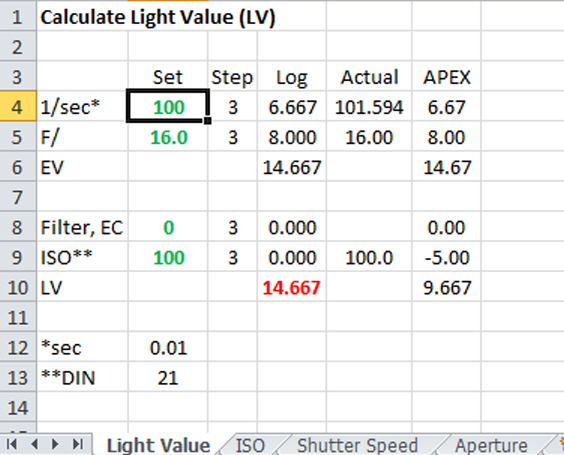
Calculate ISO
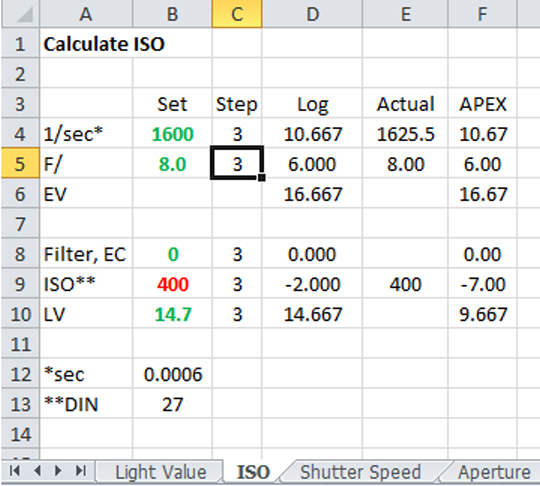
Calculate Aperture
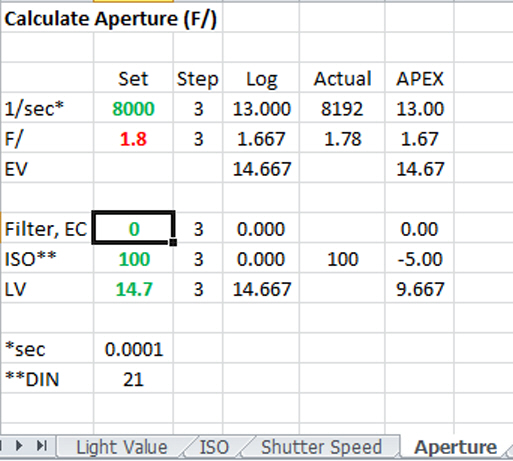
Calculate [actual] shutter speed
![Calculate [actual] shutter speed...](https://static.uglyhedgehog.com/upload/2023/12/26/376107-calc_ss.jpg)
Dec 26, 2023 11:17:10 #
selmslie wrote:
Spreadsheet and samples.
Oh boy! I am having a problem using this already. Looks like it was written with an old version of Excel, 2003. I have Office 365 and Excel 2023 or 2024. The file extension is different. xls vs xlsx. I might be able to convert it.
The initial problem is when I enable editing so I can change from ISO 100 to 200 your spreadsheet equations are no longer protected. I can't see the coding but as soon as I tried changing a value or parameter the spread sheet sheet got corrupted. Also it does not seem to give the data I expected. I expected to say set the ISO and get the equivalent exposures. As I change say ƒ-stop. This looks like it would be interesting and useful but . . .
Is LV the same as EV as on my Gossen Luna-Pro SBC Exposure Meter? On it I can pretty much see all combinations at once. Plus my version of the meter has a Zone System Scale.



Dec 26, 2023 11:57:27 #
lamiaceae wrote:
Oh boy! I am having a problem using this already. Looks like it was written with an old version of Excel, 2003. I have Office 365 and Excel 2023 or 2024. The file extension is different. xls vs xlsx.
The xlsx version below saved from Excel 97-2003 might work better for you.
The reason for the .xls version was that it should be compatible with a larger set of non-Microsoft worksheet programs including browsers. But many of them might work with either version.
I protected some cells to avoid user error, not to hide the formulas. Without protection it it's easy to accidentally overwrite a formula.
lamiaceae wrote:
This looks like it would be interesting and useful but . . .
Is LV the same as EV as on my Gossen Luna-Pro SBC Exposure Meter? On it I can pretty much see all combinations at once. Plus my version of the meter has a Zone System Scale.


Is LV the same as EV as on my Gossen Luna-Pro SBC Exposure Meter? On it I can pretty much see all combinations at once. Plus my version of the meter has a Zone System Scale.



LV is the same as EV at ISO 100 but you can see the difference when you depart from ISO 100.
Dec 26, 2023 14:09:02 #
selmslie wrote:
LV is the same as EV at ISO 100 but you can see the difference when you depart from ISO 100.
Yes, that is better. I think I see how to use it now. I expected your coding or formulas to be lock or hidden. I've done that myself for sheets I've created. It is typical at workplaces too.
I still have a couple Questions (see posted pictures). (1) Why is the (red) LV Value under Log and not Set like for ISO, Shutter Speed, and Aperture tabbed sheets? For that matter what do Log, Actual, and APEX mean. I understand Step and Set that could have been called Value. (2) It seems you know a lot about these sort of things. Looking at my Gossen Luna-Pro SBC meter face what does LW/EV, LW/EV+, and VF x/EF all mean and how do you use them? They have yet another ring! It is rather different from my old original Gossen Luna-Pro, Gossen Luna-Six, and Minolta Spotmeter F. I have also used the Pentax and Soligar Spotmeters. Thank you.
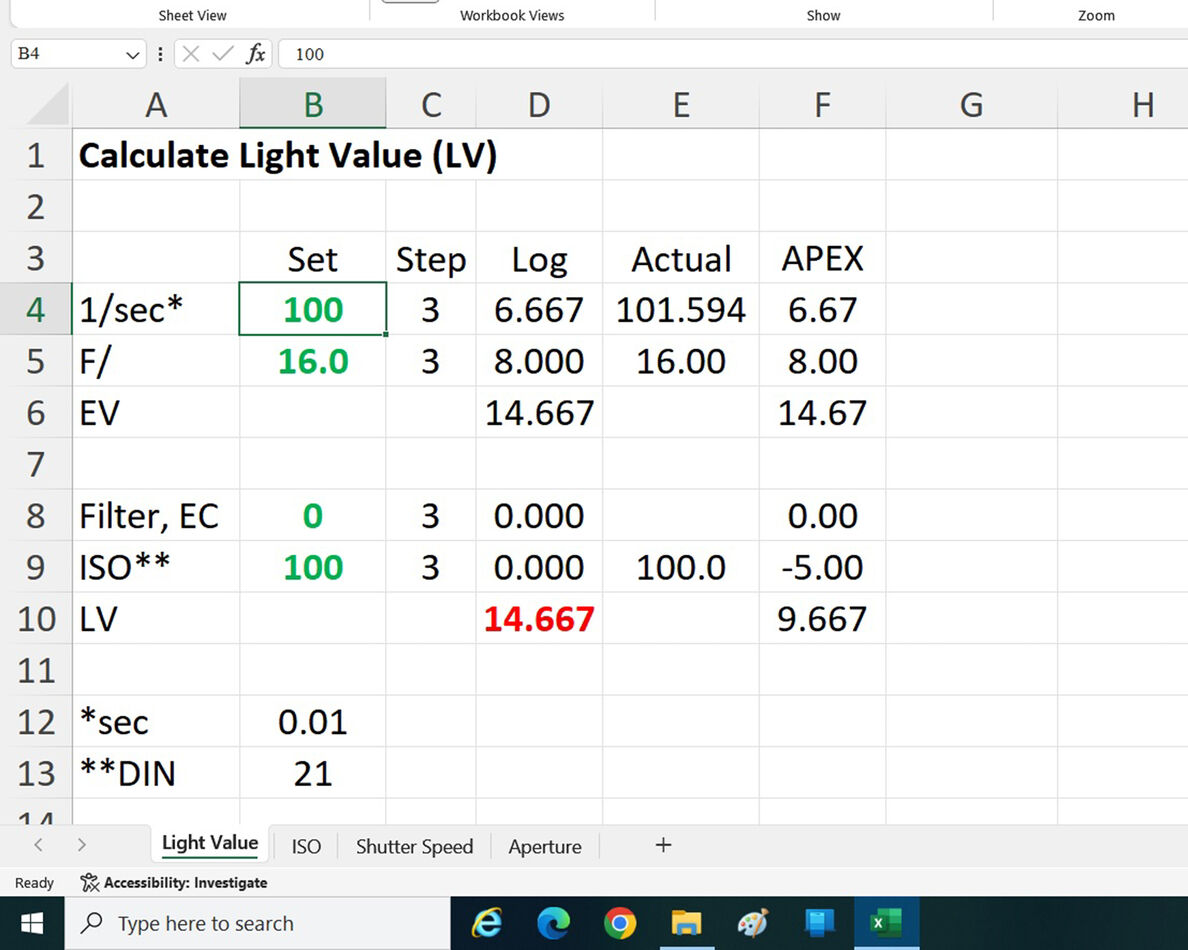
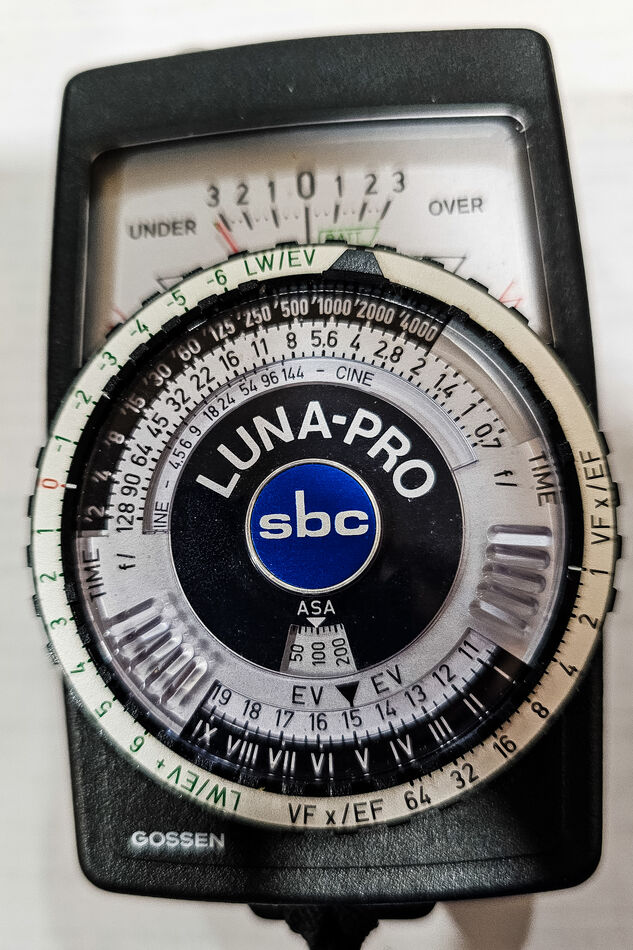
Dec 26, 2023 14:14:45 #
Dec 26, 2023 15:04:33 #
selmslie wrote:
The original spreadsheet let you calculate the Lig... (show quote)
You know my R7 passed this up decades ago.
It also adjusts for the actual T values and light loss as lens extends from far to near.
So much more accurate and quick adjustments at 15 fps as well as light changes.
Dec 26, 2023 15:11:45 #
Timmers
Loc: San Antonio Texas.
selmslie wrote:
The original spreadsheet let you calculate the Lig... (show quote)
This is all vary well and to some it is a delight I'm certain of that.
That said, I have been doing photography for 50 years and looking back I read about EV systems and then studied the EV system back about 35 years ago. Sitting at a desk in the evening after dinner I could understand how it worked and I did grasp what it had to offer.
At the same time I was getting deeper into some rather intellectual pursuits. I revisited an earlier idea that was deeply rooted in science, it was a type of intellectual view on all of the scientific method, in fact it is one of the oldest corner stones to influence the our modern scientific views. Vary old and it's name is Occam's Razor, named for a monk named William of Occam from many hundreds of years ago. Occam's razor can be taken in it's most simplified manner to inform us with a rather simply idea. When confronted by two similar ideas (explanations), the one that is less complex is the better (proffered) explanation.
So, I came to a realization throes many years ago, the rule of 16 was a much better tool for exposure that the EV system offered. This is my own personal evaluation. Perhaps it is because I'm dyslexic and find using math or things involving the use of math rather debilitating when my real purpose was to be creative in my work as a photographic artist. It may just be that I had livid in the practical world of the everyday and I was shown the face of KISS (Keep It Simple Stupid). Or perhaps it just comes from watching too much popular culture in film form, that devil Clint Eastwood's portrayal of Dirty Harry movies where like the San Francisco Version of an avenging flatermouse, he spoke truth to the world with "A man must know his limitations", minus the 357 Magnum canon he toted. I must have simplicity so as not to be distracted from my main effort and goal, to create important and meaning full creative views with a camera.
So, the Sunny 16 rule was good enough for the past greats like Ansel Adams, Ed Weston, Imogene Cunningham and Weegee, so it should be just as useful to a new generation of image makers.
Another thing, I've been doing images for a life time. I have taught photography in it's most basic manner and have been vary good at it. I use the old term, the sunny 16 rule. I never discuss nor bother with the new stupid 'exposure triangle', what triangle? The two parts are: f stops and shutter speed, that is all. Occam's Razor again or is you like Sgt. Rock, 'Nuff Said!'.
Dec 26, 2023 15:54:31 #
lamiaceae wrote:
I still have a couple Questions (see posted pictures). (1) Why is the (red) LV Value under Log and not Set like for ISO, Shutter Speed, and Aperture tabbed sheets? For that matter what do Log, Actual, and APEX mean. I understand Step and Set that could have been called Value.
Shutter speed (1/4, 1/8, 1/16, 1/32 ...), aperture (f/2, f/2.8, f/4, f/5.6 ...) and ISO (100, 200, 400, 800 ...) are numeric series. Each doubling or halving represents a one stop change. Actually, you need to square the aperture values to see the doubling/halving because they represent a diameter and the amount of light is proportional to the area of the aperture. That's what we see on the VF x/EF scales.
But 1, 2, 3, 4 stop increments are a logarithmic series. Everything in the Log column is separated by equal sized steps, including the Light Value. We see this on the LW/EV scales.
DIN is a logarithmic series with even steps in 1/3 step increments. You can see this as you change the ISO setting.
The "Set" column means that you set these familiar values on your camera or light meter.
Digital meters deal with all of this by converting the "set" values to logarithms. That lets them use simple addition and subtraction to accomplish the task of multiplying and dividing values since one stop is the same whether it's shutter speed, aperture or ISO.
The APEX system is the Additive System of Photographic Exposure, another logarithmic approach that never really caught on. I probably should have left that column out of the spreadsheets since it never really caught on.
Dec 26, 2023 16:03:22 #
Architect1776 wrote:
You know my R7 passed this up decades ago.
It also adjusts for the actual T values and light loss as lens extends from far to near.
So much more accurate and quick adjustments at 15 fps as well as light changes.
It also adjusts for the actual T values and light loss as lens extends from far to near.
So much more accurate and quick adjustments at 15 fps as well as light changes.
T-stops are a way of dealing with the fact that lenses don't transmit 100% of the light that reaches them. They are relevant when the meter is not behind the lens such as with motion picture film cameras with multiple lenses mounted on turrets.
If you are using the camera's meter it accommodates any small variation in transmission as well as changes in lens extension. Some of my older lenses transmitted as much as a full stop less light than the better ones. Modern lenses with improved coatings show very little difference.
DOF is affected by the F-stops, not the T-stops.
Dec 26, 2023 16:29:11 #
Timmers wrote:
Another thing, I've been doing images for a life time. I have taught photography in it's most basic manner and have been vary good at it. I use the old term, the sunny 16 rule. I never discuss nor bother with the new stupid 'exposure triangle', what triangle? The two parts are: f stops and shutter speed, that is all. Occam's Razor again or is you like Sgt. Rock, 'Nuff Said!'.
See Jones, Loyd A., and H. R. Condit. 1941. "The Brightness Scale of Exterior Scenes and the Computation of Correct Photographic Exposure". Journal of the Optical Society of America 31:11, Nov. 1941, 651–678. That was published before the establishment of the ASA standard. The ideas behind it were already commonly known and used. Jones and Condit did not discover or invent the concepts any more than Newton "discovered" the laws of motion. They just put them down on paper.
The "exposure triangle" was not invented recently. It just got its name very late in the game. And it refers to all three parts - aperture, ISO and shutter speed: 1/ISO shutter speed at f/16. Shutter speed and aperture define exposure and ISO completes the concept.
It's just a bit cumbersome to start from f/16 and work out the details in our head from there.
Dec 26, 2023 16:35:40 #
flyboy61
Loc: The Great American Desert
selmslie wrote:
Spreadsheet and samples.
We DO seem to make things harder and more complex than needful, don't we?

Dec 26, 2023 16:54:10 #
flyboy61 wrote:
We DO seem to make things harder and more complex than needful, don't we? 

Sometimes we can get what we want from a smartphone.
Dec 26, 2023 17:13:37 #
selmslie wrote:
T-stops are a way of dealing with the fact that le... (show quote)
The T stop is actual light.
Guess what?
The meter in the camera is lookin at the world in T stop because that is the real light, not the f stop guess.
Duh.
Dec 26, 2023 17:32:28 #
Architect1776 wrote:
The T stop is actual light.
Guess what?
The meter in the camera is lookin at the world in T stop because that is the real light, not the f stop guess.
Duh.
Guess what?
The meter in the camera is lookin at the world in T stop because that is the real light, not the f stop guess.
Duh.
Try each of your lenses spot metered on a calibrated target at the same f-stop. How much does the camera’s exposure vary? I did that and only found a couple of outliers.
If you want to reply, then register here. Registration is free and your account is created instantly, so you can post right away.




